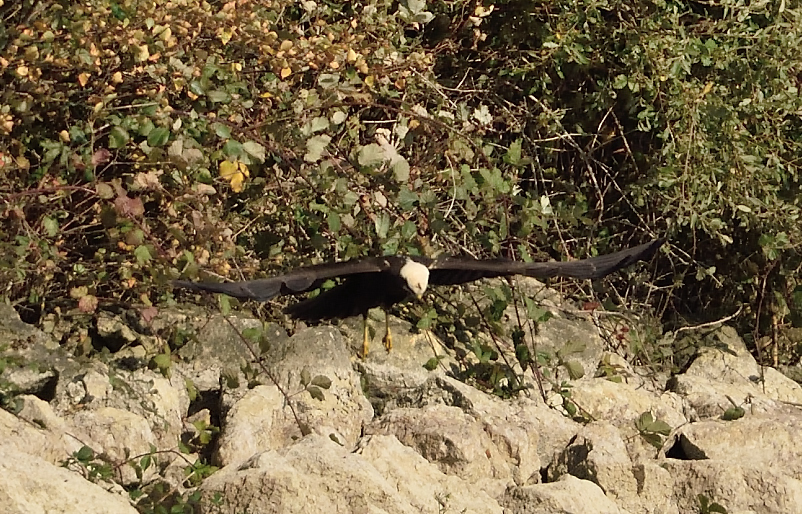A VISIT IN BAD WEATHER TO EYEBROOK AND THEN GOOD WEATHER AT RUTLAND WATER.
Having changed my afternoon visit out from the Thursday to Friday the 21st of September due to the weather forecast, I still however whilst at Eyebrook had very cloudy skies, occasional heavy rain and very high winds, so not really the best birding weather.
The best images I managed were of a Buzzard that had decided to sit it out on the ground so as to get out of the wind, so unfortunately that was the sum of my efforts.
I saw a considerable number of House Martins that had just stopped on the way South for a quick feed and were away after a short time. I tried for some images but what with the high wind and dull conditions none were of use.
My next trip out was to Rutland Water at the Egleton Reserve on Thursday the 27th of September when the weather was considerably better.
EYEBROOK RESERVOIR.
 |
Buzzard, near to the inflow. This bird sat on the ground to get out of the high wind, even so you can see the feathers on its back being blown about. |
 |
If I stand up like this I look so much taller and I can run away. |
 |
Grey Heron, Buzzard Hide, Lagoon 3. I find it very difficult not to take images of Heron, unfortunately I was getting the flight image of the GWE when this bird arrived. |
 |
Little Egret, Crake Hide, South Arm, Main Reservoir. Another bird I enjoy taking images of. This one sat on the far side of the inlet from the main reservoir on the rip rap stone. |
 |
Green Sandpiper, Crake Hide, South Arm. Squelching around in the mud, this bird had eventually flown across from the far side of the inlet making it possible to get some better images. |
 |
Such a beautiful little wader nearly up to its knees in the mud. |
After having been in Crake Hide for about fifteen minutes a Marsh Harrier appeared down on the point of the inlet and the Main Reservoir, it flew about and then disappeared over the trees only to return a minutes or so later.
It then slowly worked its way along the far bank but kept disappearing over the trees, it was a case of watching the area and waiting.
It eventually got within 220 metres of me and the following happened.
I would not usually use these images but this bird did something most unexpected.
I have checked with my friend Rhys and several others and none have ever heard of a Marsh Harrier doing an Osprey.
Please forgive the image quality, the camera was tending to focus on the rip rap stone wall.
 |
Female Marsh Harrier, {juvenile I think} Crake Hide. This is when the bird first saw something and started to hover. |
 |
It then slowly started getting lower. |
 |
And lower, by this time I was wondering as to what this bird was doing, I was most certainly not expecting what followed. |
 |
Just dipping its talons into the water. |
 |
A little deeper, the water in this area must be 1.0 to 1.5 metre deep. |
 |
And this is how it finished, with its tail feathers up and out the water but with the body well in with its wings up. |
After another dive it surfaced and had a wing drying session, you can see the area of weed behind the bird.
Thank you for your visit, I hope you have enjoyed it as much as I did in the getting of the images.










